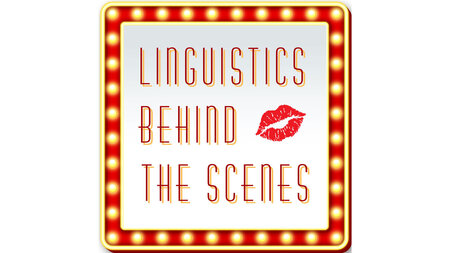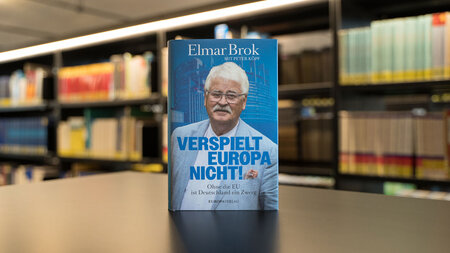“I really want to help build strong future academics”
Karen Roemer obtained her PhD at the Institute of Sport Science at Chemnitz University of Technology in 2004. Today, she is an Associate Professor at Central Washington University and their Integrative Human Physiology Program Director. She talks about her experiences as a faculty member in both the U.S. and Germany and her research on the physics of human movements
 enlarge picture
enlarge picture What is the field of Biomechanics all about?
The field of human movement biomechanics is basically the physics of human movements. We try to understand and explain the mechanics of movements while considering the characteristics of the biomaterials involved, such as muscles, ligaments, bones, cartilage etc.. The goal of our research includes optimizing performance, minimizing injuries, or ‘simply’ understanding basic principles of human movements.
How does one measure movement in volleyball jumps and running?
Whole body movements in sports, like volleyball spikes and running, are either analyzed using inverse dynamics or forward dynamics. For both approaches, we typically use video-based systems that capture the 3-dimensional trajectories of markers attached to the human body. Whenever possible, we also use force platforms to quantify external forces as well. In the next step we feed the movement information into computer models to calculate for example joint reaction forces to understand how much we stress our musculoskeletal system and what we can do to optimize a movement.
Some of your research is focusing onbalance in older adults. How does age affect balance?
Biomechanically speaking, there are a few components that change with age and make it more difficult for us to balance and stay upright throughout the day. We are specifically looking into so-called balance strategies and their impact on balance performance. The term balance strategy refers to the joints we use predominantly for controlling our upright stance. We found that younger adults do most of their balance control using very fast adjustments around their ankle joint, which seems to be highly efficient. As we age, we tend to shift this upwards more towards the knee and hip joints which is related to slower posture adjustments. The underlying mechanisms, why this happens is not quite clear yet. One explanation could be related to the way how our muscles and muscle fibers change with age, the fact that we lose fast twitching muscle fibers earlier than slower twitching fibers.
Where does your research interest in the knee joint stem from?
The knee joint is the largest joint we have in our body and it is quite fascinating how stable this joint is, given the fact that the articulating joint surface and contact area is rather small. The interaction of the two major bones tibia and femur in conjunction with the small patella create a very efficient system of multiple moving joint axes. This design optimizes our muscle moment arms in a way that we can stand up from a chair without much effort. Understanding these mechanisms and learning about the efficiency of this joint has always intrigued me.
How much influence has technology had over your field of work in the last 15 years?
Technology has always played a major role in human movement analysis. To investigate human movement, we need to be able to capture the movement and quantify the kinematics. About 15 years ago we were still quite limited in capturing large movements in the field – for example downhill skiing or a swimmer in the water. Thanks to new technology, we are now able to capture movements in more realistic environments and with higher accuracy. Since our models will just be as good as the information we obtain, our models in turn are also enhanced. Additionally, computing capacity increased tremendously which also allows us to use more complex models with more detail without waiting hours for results. Basically, the advancement in technology makes studies in the field much more feasible for us.
Can you describe what the experience is like lecturing in Germany and in the US?
In my experience, the major difference in teaching here in the US is the inclusion of hands-on labs in all major lectures. It is the norm, to offer 2 hours of lab experience per week for each lecture course in specific teaching labs. This means, that we have a fully equipped motion analysis lab for teaching purposes. Another difference that goes along with the lab experience, is that the maximum class size is around 30 students for the lecture portion and about 15 students for each lab section. Hence, we meet the students multiple times each week which influences the interaction in a way that we can focus more on working through applied problems rather than just presenting knowledge.
What do you like the most about your job?
I think it is the versatility that I like most about my job. I am in charge of how I want to teach content, I am in charge of my research and can decide what I deem important to work on, and as a program director I can develop and shape our graduate degrees. What I really like here in the US is that as faculty we are on 9-months contracts. This means that we do our regular work for 9 months and have 3 months each summer to ‘play’. During the summer you can for example really focus on research projects, work on externally funded grants, use the time for international collaborations and travel to conferences, add some summer teaching, or simply take some time off to reset. I typically, do a mix of the above depending on what research project I am working on.
Do you think we are at the peak of sport science so far?
No, I think that new technologies, materials, and ideas will continue to push the boundaries of our profession. While we may not see huge jumps in performance increase in classic sport events, such as a Track & Field 100m race, I do believe we will continue to see new sports disciplines developing and potentially see adjustments in others. Great examples are ice speed skating with short track or snowboarding with the boardercross events. I am looking forward to what the future holds for sports science.
What is Integrative Human physiology program all about?
The master of science degree in Integrative Human Physiology integrates knowledge from multiple sciences including anatomy, physiology, biomechanics, biochemistry-metabolism, exercise physiology, nutrition, and statistics to advance understanding of human function including movement, disease, aging, environmental stressors, physical injuries, and ergogenic aids. The degree prepares students for PhD programs and health-care careers such as Physical Therapy, Occupational Therapy, Physician’s Assistant, Accelerated Nursing, Chiropractic Medicine, Prosthetics, and other healthcare arenas.
As a successful academic, what other feat do you aim to achieve going forward?
Beside my research interests that I continue to pursue, I really want to help build strong future academics. As the COVID pandemic hit us in March 2020, we decided to react by developing an accelerated Master’s degree to fill the anticipated future demands in the health care professions. This was a challenging time for all involved, with flipping all course work in all our undergraduate and graduate degrees to hybrid and online offerings within a week’s time in spring. However, we decided to look at the needs the pandemic entails for our community, university, department, students, and just move forward. We were able to develop the degree within 4 months and started it in the fall with a full cohort enrolled. We used all the flexibility our system provided us to react fast and were able speed up the process between the idea, developing the curriculum, and moving everything through the approval process.
Why did you choose Chemnitz University of Technology for your PhD?
I chose Chemnitz for my PhD because of the expertise of Professor Maisser, who was the director of the Institute of Mechatronics at that time. Secondly, the proximity to the Institute of Applied Training Sciences and the University in Leipzig were crucial for my PhD project. Last but not least, the newly developing area of sports engineering as a joint effort between the institute of sport science and the department of mechanical engineering at Chemnitz University of Technology was very enticing. The interdisciplinarity of the academic environment and all projects I was involved in, really enabled me to pursue the research I envisioned when I started my PhD.
What advice do you have for prospective and current students at Chemnitz University of Technology?
A general advice I have for students is to study with a purpose. To get the most out of your experience of being a student, you need to figure out what future career you want to pursue but then not only take the classes needed, take classes outside of your specific field and get involved in research projects. Often those extracurricular activities will help you stand out in the end, help stir you in a direction that is most interesting to you, and makes you stand out from the crowd.
Do you have any fond memories of your time in Chemnitz?
Yes, I have many great memories related to Chemnitz and the Erzgebirge. If I have to narrow it down to one then it is the winter time. I will always miss the Adventszeit which I think is very special in the Erzgebirge. Taking a sip of spiced mulled wine at the Christmas market after work was always a special treat. Enjoying the snow on cross country skis in the mountains or downhill skiing in O-Thal followed by a good Soljanka was also my favorite.
(The interview was conducted by Eva-Marie Moore.)
Matthias Fejes
02.10.2020





